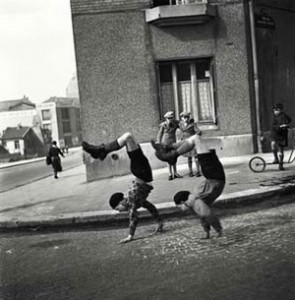How to Read a Photograph by Ian Jeffrey
Ian Jeffrey’s survey of master photographers is thorough and thoughtful, even if the contents have little to do with the title.
The book, published by Harry N. Abrams in 2008, is actually a series of biographical sketches of great photographers, coupled with the author’s own comments. A better title might have been “How I Read a Photograph” because the commentary really does concentrate on how Mr. Jeffrey views the photos.
His commentary, however, is quite good and contains a lot of material for photographers to think about. The selection of photographers in any survey of photography is likely to reveal the author’s own prejudices and preferences and this book is no exception. Generally, though, most students of photography should not find themselves disagreeing too much with Jeffrey’s selections.
Two notable omissions are Jerry Uelsmann and Irving Penn. On the other hand, he does include several Japanese and European photographers who are often neglected in texts that are more heavily weighted toward American photographers. He includes a number of anonymous or semi-anonymous selections from the World Wars that, while interesting and thoughtful, can seem out of place with the rest of the images.
If I have any real quibble with Mr. Jeffrey though, it is that I think he sometimes reads a little too much into the photographs and may presume that the photographer had greater control over some of the elements of the final image than I think the real world allows.
Almost every photographer I know would acknowledge that photography is often a crap-shoot and that more great photographs are the result of happy accidents than any of us would ever admit. But in Mr. Jeffrey’s world, almost no element of any picture is the result of spontaneous and undirected circumstances. While we might like our audiences to believe that, I think if we are honest, we would admit that in the real world there simply are always going to be some elements the creep into our photographs without any pre-planning. Along the same lines, I think Mr. Jeffrey sometimes has the tendency to rely too heavily on literal interpretations and discount the purely visual nature of photographs.
Sometimes photographers take pictures in order to make a statement, but sometimes a picture is just a picture – meant to be enjoyed on a purely visual level.
Finally, in some cases it would have been nice for the reproductions to have been a little larger and thereby easier to read.
Still, any weaknesses in the book are minor and if you are interested in the nature of photographs, in learning about photography from a talented and knowledgeable critic and historian or if you just want to have a book that contains a lot of great images and information about some of the world’s greatest photographers and their photographs, this book is very worthwhile.

